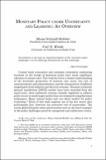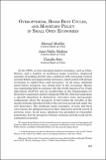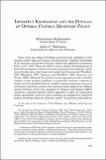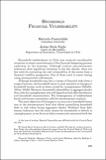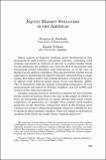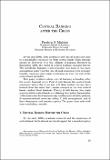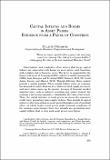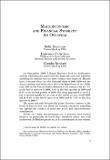Buscar
Mostrando ítems 21-30 de 323
Monetary policy under uncertainty and learning: an overview
Central bank economists and academic economists conducting research on the design of monetary policy have made significant advances in recent years. This work has led to a clearer understanding of the desirable properties of interest rate rules, the role of announcements and communication, and the ...
The balance sheet channel
We study the role of the balance sheet channel of monetary policy in an environment in which credit plays an important role in the funding of new capital investment. Specifically, we ask whether the transmission mechanism of monetary policy is altered in an environment in which financial intermediation ...
Overoptimism boom-bust cycles and monetary policy in small open economies
In the 1990s several emerging market economies such as Chile Mexico and a number of southeast Asian countries displayed episodes of peaking growth rates combined with increasing current account deficits and appreciating currencies which ended with abrupt reversions in capital flows and recessions. In ...
Modeling a housing and mortgage crisis
The current crisis has centered on borrower defaults on mortgages and the associated effects on banks’ own credit standing (and in several cases their own default), which in turn led to tightened conditions for lending to new (mortgage) borrowers. Any model that does not incorporate all or most of ...
Imperfect knowledge and the pitfalls of optimal control monetary policy
Sixty years ago, Milton Friedman questioned the usefulness of the optimal control approach because of policymakers’ imperfect knowledge of the economy and favored instead a simple rule approach to monetary policy (1947, 1948). These are still live issues, despite the development of powerful techniques ...
Household financial vulnerability
Household indebtedness in Chile has received considerable attention in recent years because of the financial deepening process underway in the economy. Although various macroeconomic indicators show significant increases in the last decade, there are few tools for evaluating the real vulnerability of ...
Equity market spillovers in the Americas
Many aspects of financial markets merit monitoring in risk management and portfolio allocation contexts, including (and perhaps especially) in contexts of interest to central banks. Much recent attention, for example, has been devoted to measuring and forecasting return volatilities and correlations, ...
Central banking after the crisis
By the mid-2000s both academics and central banks had come to a remarkable consensus on what central banks’ basic strategy should be. However with the collapse of Lehman Brothers in September 2008 the world of central banking changed forever. The worldwide financial crisis revealed that some of the ...
Capital inflows and books in asset prices: evidence from a panel of countries
Policymakers and academics often believe that large capital inflows are associated with booms in asset prices and therefore with a higher risk of financial crisis. The belief is supported by the theoretical works of Krugman (1998) Caballero and Krishnamurthy (2006) Aoki Benigno and Kiyotaki (2009) ...
Macroeconomic and financial stability: an overview
On September 2008 Lehman Brothers filed for bankruptcy and the world became aware that the financial crisis that had been unfolding for months was far more serious than expected. Months later it became clear that the financial crisis of 2008-2009 was the worst economic downturn since the Great Depression ...

